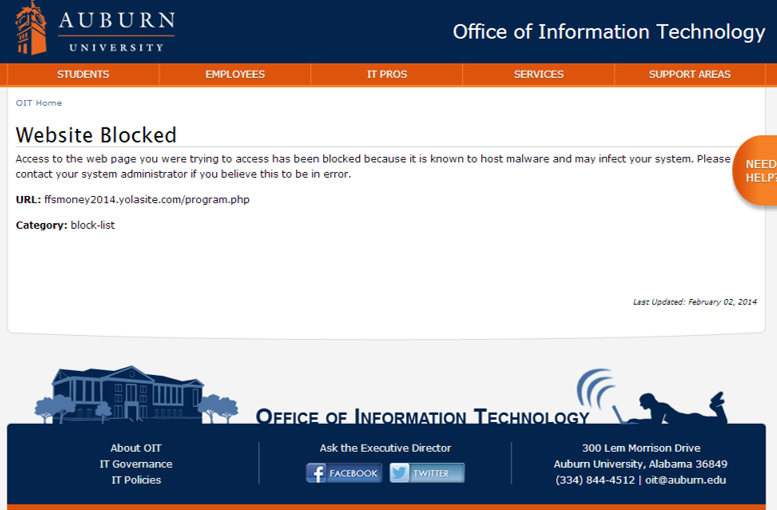


Can you spot the phishing signs? Click or hover over the areas with dashed lines to read a description.
On 2/6/14 12:23 PM, "PayPal" <paypal@update.com> wrote:
Dear customer,
We regret to inform you that your account has been restricted.
To continue using our services plese download the file attached to this e-mail and update your personal information.
© 1999 - 2014 PayPal
From: Auburn University [mailto:mwagone@purdue.edu]
Sent: Wednesday, February 05, 2014 8:27 AM
Subject: Letter From Auburn University !!!
You have 1 new Security Message Reference for your account!
Re-Login to confirm your account status [Click here >]
This message should only by those who can read it addressed and its content is not intended for use by any other person.
Copyright © 2014 Auburn University.




If you ever reach a page like the one shown below while on the Auburn network, that's OIT helping you to not get phished. OIT currently blocks ~4,000 websites, which also includes entire domains.

Google blocks 10,000+ phishing/malware websites every day. If you run across a website like the one shown below, that's Google looking out for you.
